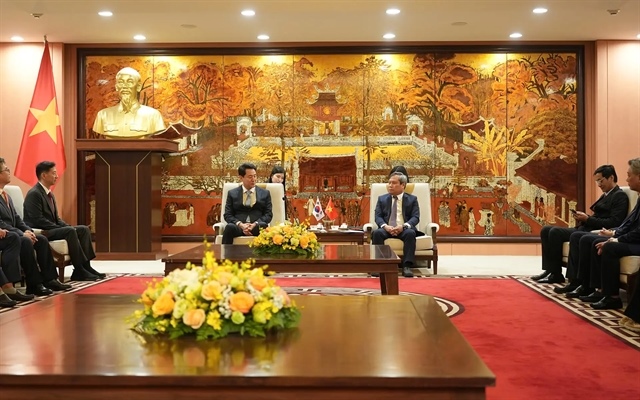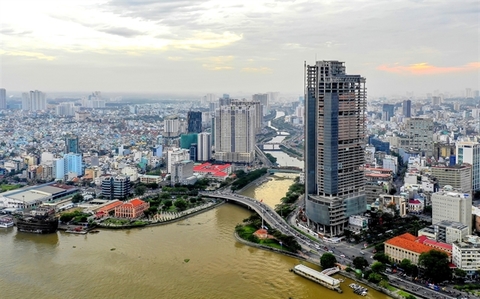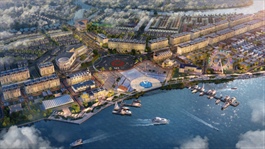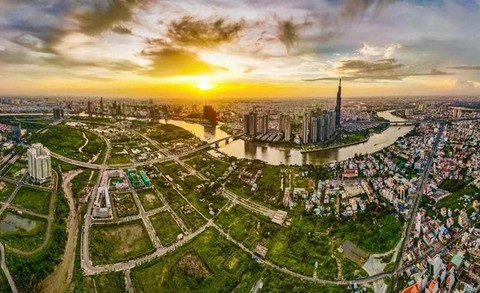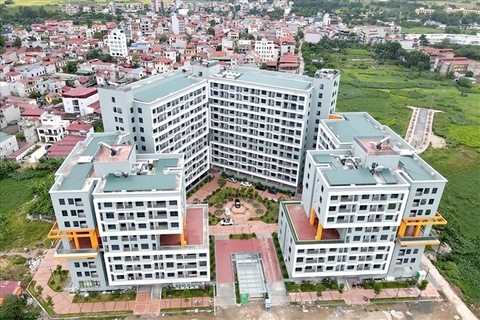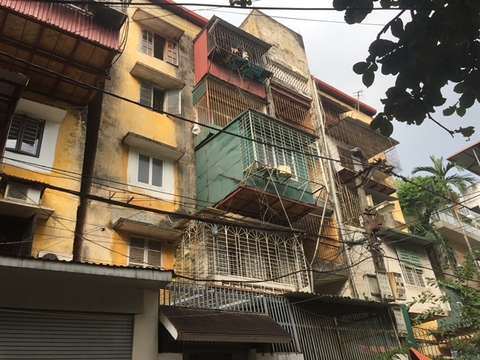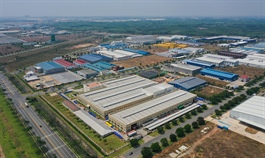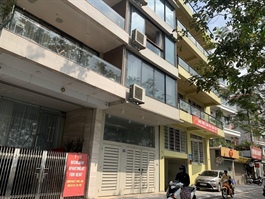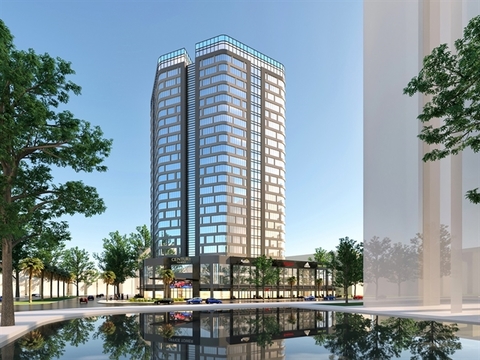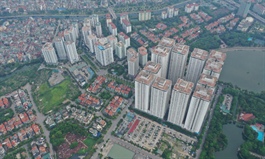Renovation of old partment buildings must keep social cohesion: Experts
Renovation of old partment buildings must keep social cohesion: Experts
The old apartment buildings represent one of the architectural landmarks in Hanoi's history, telling people the historical story of the capital city.
Hanoi, the capital city of Vietnam, is reaching out for a drastic change with the image of new urban areas and modern apartment buildings. In such a special transitional period, we see the grey and patchy color of the old apartment blocks somewhere that seem to have never faded with time. There still preserve special imprints – a legacy of difficulties but a memorable period of many Hanoians.
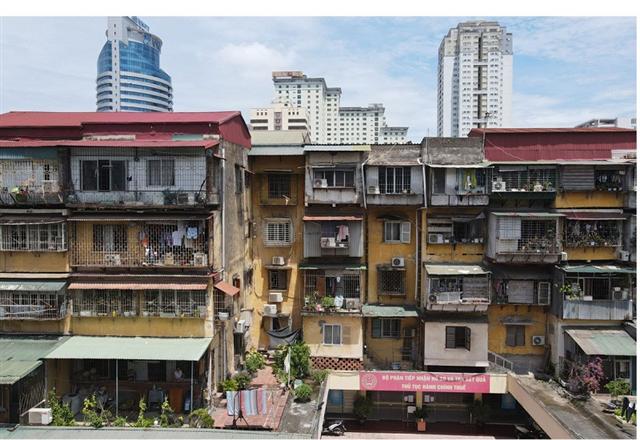
Many iron caged-balconies are built in the back of many old apartments in the capital city. Photo: Minh An |
Social cohesion
The old apartment buildings or Khu tap the, in Vietnamese where people share space and time to enrich and support each other, first appeared in the capital city in the 60s and were designed with three or five-story apartment blocks. They represent an important page in the history of housing development in Vietnam.
“For Hanoians of the 6X, 7X, 8X generations like us, the old apartment building is a vivid childhood with full of memories,” Architect Pham Thuy Loan, the Deputy Director of the National Institute of Architecture, began her story with a reminiscence of her teenage in Tang Bat Ho apartment building, where she was born and grew up together with other children.
She said it is the memory of happiness and warmth in the residential area. “There were typical yellow doorways, the stairs glittering with light through from the slots of concrete walls, the voice of the neighbors calling street food vendors, and the buzz of old people and kids in the yard… All of these are beloved spaces for those who grew up in the old buildings.”
Khu tap the is one of the typical architectures when remembering the hard years of a subsidy period,” Loan said.
Locating in the inner-city, but the lifestyle of khu tap the seems to have the appearance of a village, where is full of friendship and closeness along with indispensable stories of joy and sorrow. Reminiscing about old stories, neighborly feelings appear in many people's memories.
Nguyen Thi Lien, a resident in Kim Lien Ward’s apartment bloc C4 said: “In the past, women walked past each other’s house when they were on the way to their working place, they would definitely try to meet the neighbors, just to say hello.”
If someone was absent for only one or two days, women would soon discover it and go up or downstairs to ask for the reason, ensuring that nothing bad happened. “It was not seen curious but caring. People, at that time, lived on the same floor, would always pay attention to the house next door.”
Lien said there were even some traders who did business far from home and could not take care of their children all day. Their children would be cared for by their neighbors without a fee.

Social cohesion is seen as a traditional cultural value of many Hanoians. Photos: Quang Hung - Cong Hung |
The social cohesion in khu tap the has been regularly developed in its own way by generations full of love and compassion.
Nguyen Thi Thu, an owner of an apartment in Nghia Tan dormitory, told that the caring has been expressed through small things. “Walking on the same way back from the market, if someone saw me carrying two bags, he/she would carry one for me. Going upstairs, the young people would help the old, the men would help the women.”
Thuy said sometimes she got countryside gifts, which may be corns, sweet potatoes, and cakes, she would share it with her neighbors. “In the past, lack of rice was normal, I could borrow some rice from the neighbor and returned them a few days later. No one questioned at all.”
Architect Dao Ngoc Nghiem, Vice Chairman of the Hanoi Urban Planning and Development Association, said many groups have researched Hanoi’s thousand-year-old architecture, focusing on typical works before 1930 or French villas, however, there still lacks research on architecture in the period 1954-1986, including the architecture of khu tap the.
Nghiem said this was the stage of historical development from a colonial city to a socialist city. “This is a transformation period that many construction works were subsidized by the State with designing supports from architects of Vietnam and the Soviet Union, creating a special mark for Vietnamese architecture.”
During this period, he said Hanoi began developing the simple prefabricated five-storey building in Trung Tu, Khuong Thuong, Giang Vo, Vinh Ho, Nghia Tan, Thanh Cong, and Thanh Xuan.
“Each khu tap the has been formed as a residential community having a new lifestyle and own characteristics of Hanoi: warm neighborly affection and joining hands together to overcome the hardships during the subsidy period,” Nghiem said.
The most luxurious place in Hanoi for a while
According to the elderly living in the old buildings, after the city was liberated in 1954, headquarters and offices of the old regime were confiscated while many villas were left empty by bourgeois families after they evacuated to the South.
At the same time, many cadres and soldiers, who returned to their homes in the capital city from the war zones, had been arranged to live in such old villas and offices. They were very happy.
Vu Cong Chien, an old man living in Kim Lien old apartment building, said that he has lived here since he was nine years old and now he still remembers how excited his mom and dad felt when they received an apartment here.
“I was running around the room while my mom was touching every wall, every brick. Even though they didn't say anything, I still saw happiness in the eyes of all family members,” Chien recalled.
He said the intention to build the Kim Lien building was initiated after a visit paid by President Ho Chi Minh to North Korea. He saw closed buildings with apartments, stores, kindergartens, playgrounds, medical stations in this country so that he proposed North Korea support Hanoi in constructing similar buildings for cadres, who had no house after coming back from the war of resistance against the French colonialists. After that, a number of four-storey buildings were constructed in the capital city, becoming the highest one.
“The buildings were seen as luxurious ones in the 60s of the last century. It was proud of any family staying there. That’s a new life,” Chien said.
Architectural heritage to be preserved
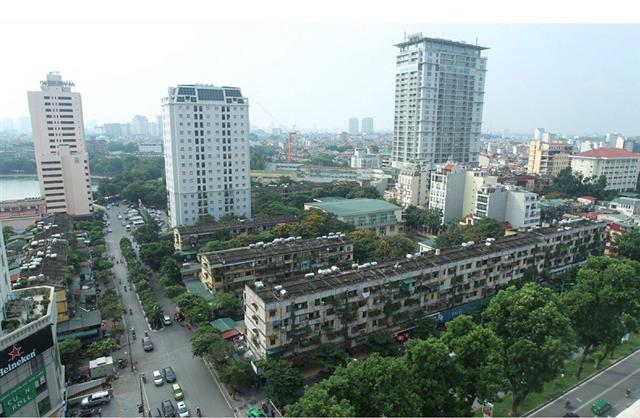
A corner of Giang Vo old apartment building in Hanoi. Photo: Ngoc Tu |
According to statistics, Hanoi currently has more than 1,500 old apartment buildings, ranging from two to five storeys, mainly built from 1954-1986.
Hanoi People’s Council has recently approved a project on upgrading old apartment buildings in the inner city. It’s expected to improve the living conditions of many Hanoians, leaving behind worries about the danger of collapse while the city’s face will also become spacious.
However, what will the city gain and lose from this change?
Martin Rama, Project Director of the Sustainable Urban Development Centre under the Vietnam Academy of Social Sciences: Upgrading the old apartment buildings is to preserve memories for Hanoi.
The old apartment buildings represent one of the architectural landmarks in Hanoi's history, telling people the historical story of the capital city. From a historical point of view, the dormitories are part of a “common memory”, if they are replaced by modern buildings, Hanoi's memories will disappear.
He said in the process of researching solutions for the old dormitories, the center’s architects developed an idea of upgrading in a few places, preserving the Soviet and Chinese architectural styles and prefabricated models of the city, in which the additional floors above will have the same shape as the original dormitory, standing on solid pillars rather than on top of the old structure. Around the renovated dormitory area will be pedestrian streets creating a lively living environment for local residents.
In the project, local people will still live there as a non-monetary value for the whole upgraded buildings. The upgrading work should be piloted and gradually carried out under the assessment of the professional architects’ council.
Only a few decades later, apartment building complexes preserved and renovated in that way will be a unique 20th-century architectural landmark of Hanoi.
Le Thi Bich Thuan, Deputy Director of Institute for Urban Studies and Infrastructure Development: Trends in the world.
In the world, there are two trends including demolition and new construction and restoration and renovation to enhance traditional values. The first trend is often applied in many old apartment buildings in Europe built in the 1970s. This brings high economic value.
However, when the old buildings are demolished, social cohesion is also removed. Another problem is that newly built apartment blocks create monotony, not meeting the public space as most of the land resources are used for the new buildings. This lesson has been recognized by planners and residents of old European apartment complexes after the renovation process.
The second trend is to cautiously renovate while ensuring humanity in the implementation process. To achieve these goals, the cost and time will be significantly increased. Currently, the requirements for the renovation of old apartment buildings are to improve housing in terms of interior and exterior space while meeting the requirements of modern life and not harming cultural and social values. This renovation is only successful when the community is involved in the design, capital mobilization, investment management, construction, and operation. This trend received a lot of positive responses from the people.
Pham Thanh Tung, Chief of Office of Vietnam Association of Architects: Renovation is necessary, but there must be regulations for preservation management.
It has been 20 years since we posed the renovation of old apartment buildings, but now have the conditions to look at it with a new vision and new thinking thanks to the Government’s Decree 69/2021/ND-CP on upgrading and rebuilding old apartment buildings and the policies of the Hanoi Party Committee and Hanoi People's Committee issued recently.
However, in the process of transformation, it is needed to have a comprehensive assessment of the preservation of old apartment buildings, which should be seen as a cultural mark on construction in the history of Vietnam and Hanoians as well. It is necessary to consider the old apartment blocks as a cultural heritage of Hanoi. To do this, the city must organize seminars and set up a project committee to evaluate this issue.




